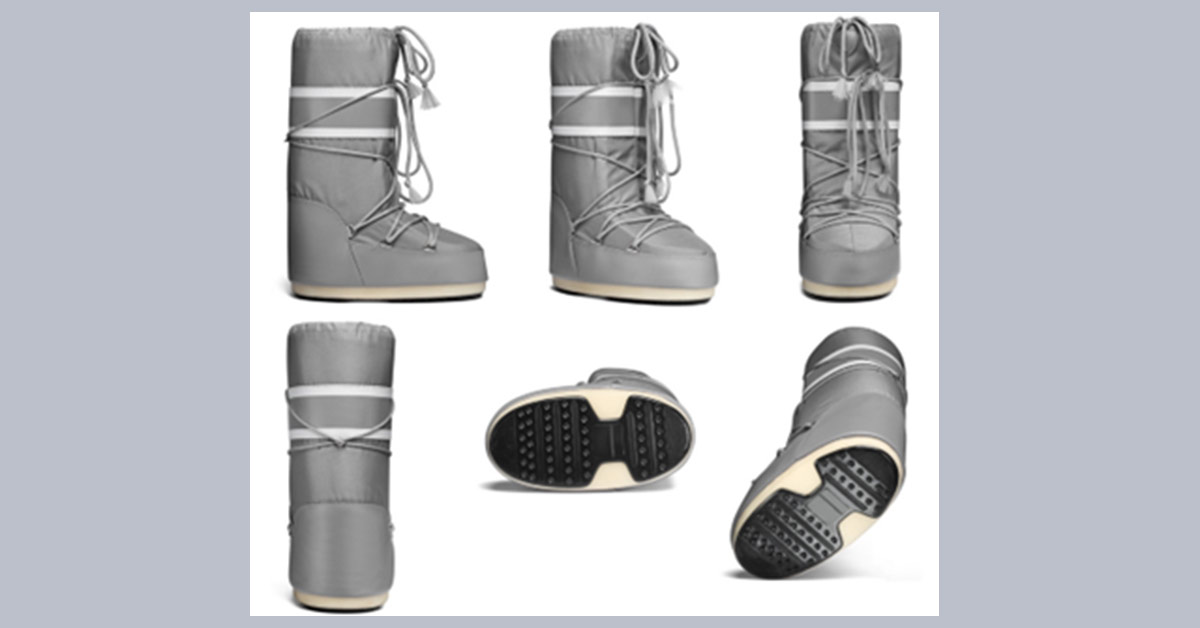
17 May Defying gravity: The 3D shape of the “Moon Boot” no longer acts as a trademark
Singular 3D shapes applied to products can function as brand identifiers and proof of this is that, regardless of any other mark appearing on the shapes, everybody recognizes the Coca-Cola bottle , the Toblerone chocolate bar or the Duracell battery.
However, 3D shape marks can be challenging to register as shapes are intrinsic to products and thus, the threshold for distinctiveness for a 3D shape mark could be higher than for other marks (although in theory this should not be the case). The 3D shape must differ from other existing shapes for the goods in the market and be recognizable as a unique badge of origin for the goods in the eyes of the relevant public.
The boots marketed under the mark Moon Boot (Tecnica Group SpA) has had a longstanding presence in the economic traffic, being nowadays one of the most popular après-ski boots in the market. Thus, how come such an icon has lost its legal protection as a 3D trademark?
In 2017, the Swiss company, Zeitneu GmbH, filed a request for a declaration of invalidity against the 3D trademark registration on the shape of the boot of Tecnica Group SpA, as reproduced below (EUTM No. 010168441), under Article 59(1)(a) and Article 7(1)(b), (c), (d) and (e) of the EUTMR. In 2019, the Cancellation Division declared the invalidity of the trademark because it was found that it was not distinctive in relation to goods in class 25, as the “L” shape of the trademark was typical of boots and there was not enough distinction to individualise the trademark from other similar products to the relevant public.
The First Board of Appeal of EUIPO confirmed this decision, declaring that since the contested mark does not depart significantly from the mass of after-ski boots, it is devoid of any distinctive character. Tecnica Group SpA filed an appeal before the General Court alleging a violation of Article 7(1)(b) and 7(3) of Regulation No. 2017/1001 (among other claims).
The decision of the General Court confirmed that for a shape to be registrable as a trademark, it must be in some way distinctive of the owner’s product. The shape must depart significantly from the norm or customs of the sector, so that it enables consumers to identify the goods just by their appearance and therefore, fulfilling its essential function of indicating origin.
It has been concluded that based on the evidence, the shape of the commercialized boots under the mark Moon Boot does not emerge as being one company’s product. Many other companies sell similar variants of the product which are usually available on the market and thus, it does not permit the finding that the mark, as a whole, departs significantly from the customary shapes in the sector, concluding that it is no longer appropriate for Tecnica to keep exclusive rights on that shape.
It is also relevant to highlight that the General Court has held that the fact that of the commercialized boots under the mark Moon Boot have a reputation in the EU market does not automatically mean that its shape has acquired a distinctive character through use. While reputation only needs to be proven in a substantial part of the territory of the Union, acquired distinctiveness must be proven throughout the whole Union.
This decision raises the question to whether it is worth protecting a shape as a trademark in the EU, because statistics show that the refusal of the validity of the three-dimensional marks is the most likely outcome.
It is in fact challenging to prove that shapes are perceived by consumers as indicating the origin of the products as generally consumers do not rely on shapes only to identify who is selling the goods and most probably rely on the brand name or logo on the goods.
All in all, the fact that shapes are difficult to register is a reality. For example, Lego and its world-famous building bricks or Nestlé and its popular Kitkat have failed to obtain registrations for their well-known shapes.
Are you Interested in filing a 3D shape trademark? We do not wish to discourage you, but it will indeed be a difficult milestone. However, not an impossible one: rest assured that the shape departs significantly from the norm or customs of the sector (and which is not imposed by any technical or functional requirement). And last but not least, establish a watch to detect unauthorised third-party use of the same or similar shape and fight it firmly; this will prevent the exclusivity and attractiveness of your 3D brand from being diluted.
If you want to access the full text of the decision, you will find it in the following link:
Author: Isabela Robledo McClymont




